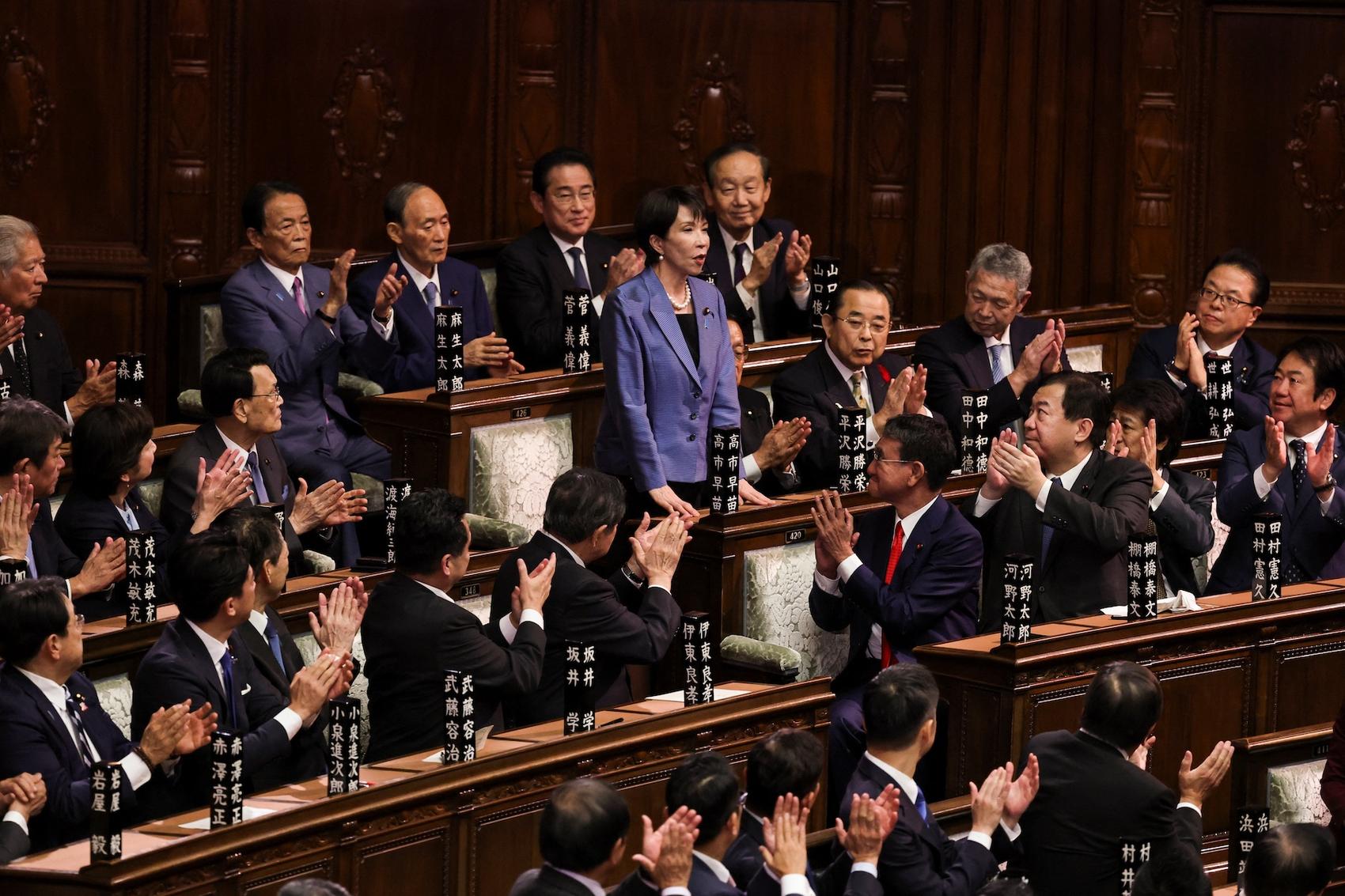Japan’s parliament has elected Sanae Takaichi as the country’s first female prime minister. This after months of political turmoil after the Liberal Democratic Party’s (LDP) major election loss in July. Her rise to power marks a historic moment for Japan. Yet, her leadership faces significant challenges, including a fragile coalition and mounting public dissatisfaction over economic issues.
Takaichi, an ultraconservative politician and close ally of former Prime Minister Shinzo Abe, secured 237 votes, narrowly surpassing the majority required. She replaces Shigeru Ishiba, who resigned after only a year in office. Her victory was ensured through a last-minute coalition between the LDP and the right-wing Japan Innovation Party (Ishin no Kai). Contrasting the LDP’s long-standing partnership with the centrist, Buddhist-backed Komeito who collapsed.
The new alliance is expected to push Japan’s policies further to the right, reflecting Takaichi’s nationalistic and hawkish positions. However, the coalition remains short of a parliamentary majority, meaning her government must seek support from other opposition parties to pass legislation. Analysts warn this could make her administration unstable and short-lived.
Economic recovery is Takaichi’s immediate priority. The LDP’s Secretary General, Shunichi Suzuki, stated that the government plans to address rising prices and public frustration through new stimulus measures expected by December. Takaichi is also preparing for a series of major international engagements, including talks with U.S and regional summits.
Public Figure of Takaichi
Despite being Japan’s first female leader, Takaichi has shown little interest in advancing gender equality. She supports traditionalist positions such as male-only imperial succession and opposes same-sex marriage and separate surnames for married couples. Her conservative stance aligns with that of her mentor, Abe, whose legacy she is expected to continue through military strengthening, economic expansion, and potential constitutional reform.
Takaichi’s political career spans over three decades, having first been elected to parliament in 1993. She has held several high-level positions but lacks significant diplomatic experience. Her reputation as a hardliner has drawn criticism from neighboring countries, particularly China and South Korea. Due to her visits to the Yasukuni Shrine and her revisionist views on Japan’s wartime history. Recently, she has attempted to moderate her image by avoiding direct visits to the controversial shrine.
Takaichi’s premiership begins under intense scrutiny. With a divided parliament, economic pressures, and fragile alliances, her ability to maintain stability and deliver on her ambitious agenda remains uncertain.
Reference
Yamaguchi, M. (2025, October 21). Diet elects Sanae Takaichi as Japan’s first female prime minister. Japan Today. https://japantoday.com/category/politics/Diet-elects-Sanae-Takaichi-as-Japan’s-first-female-prime-minister
